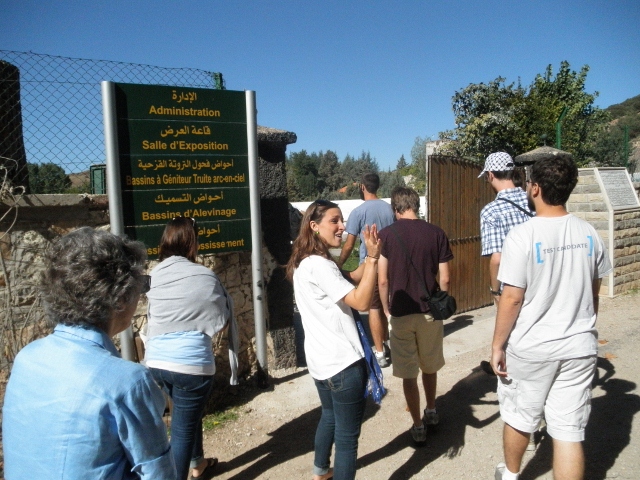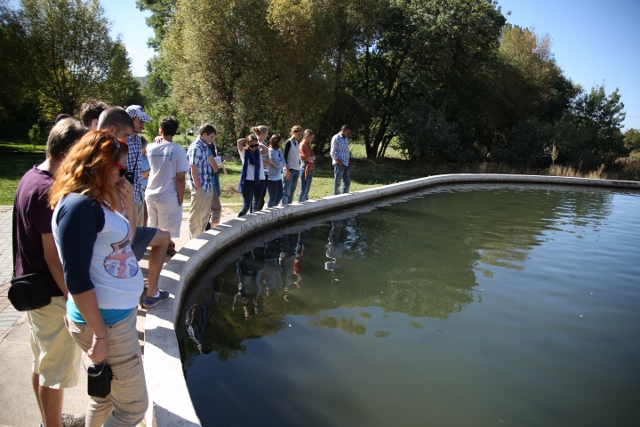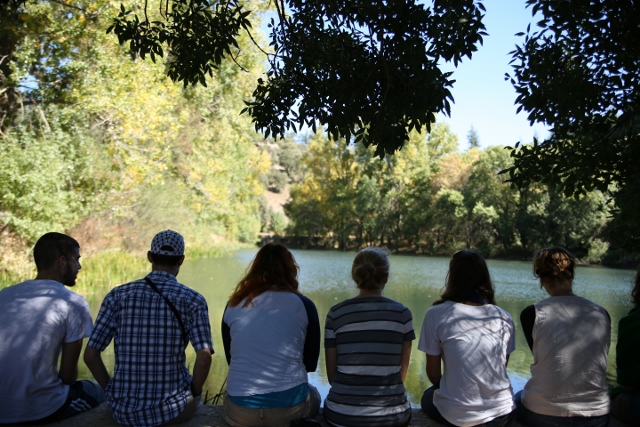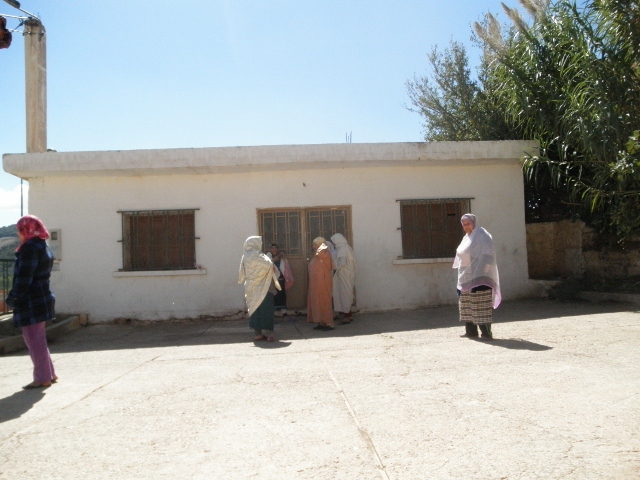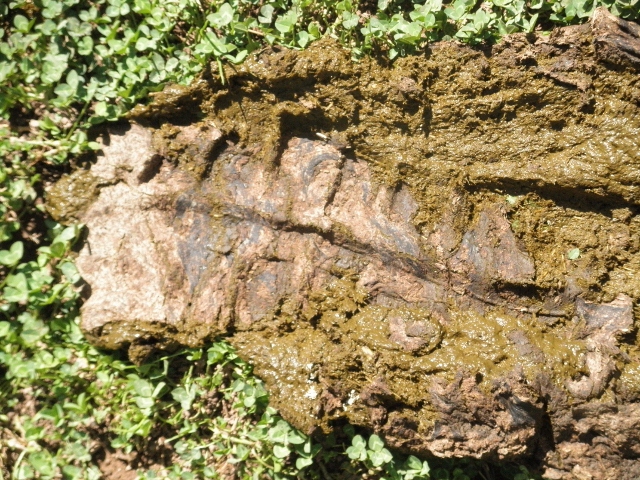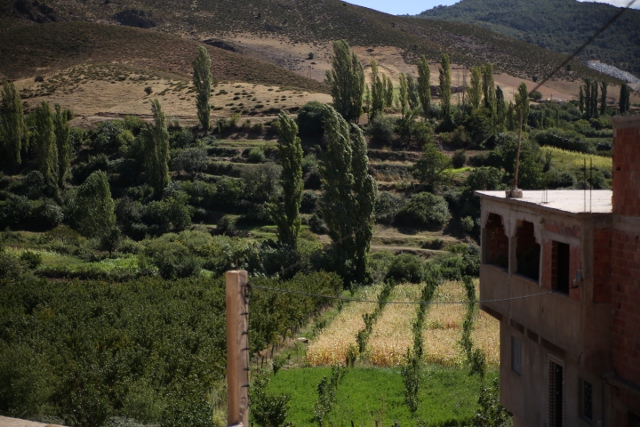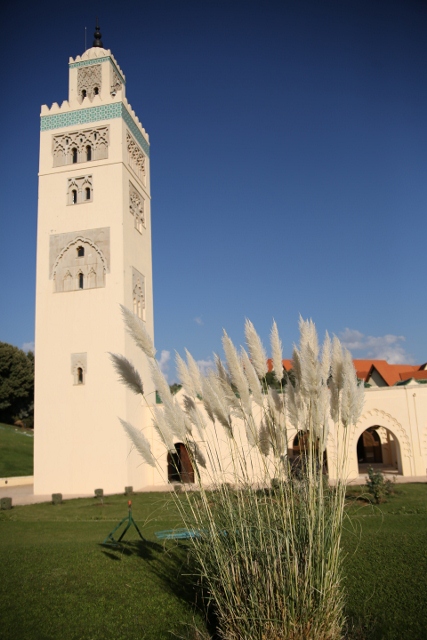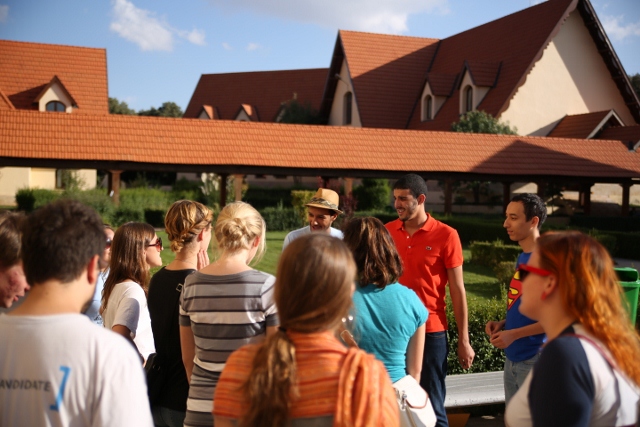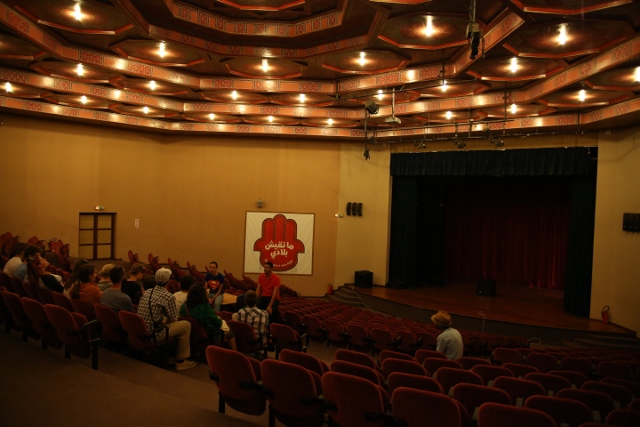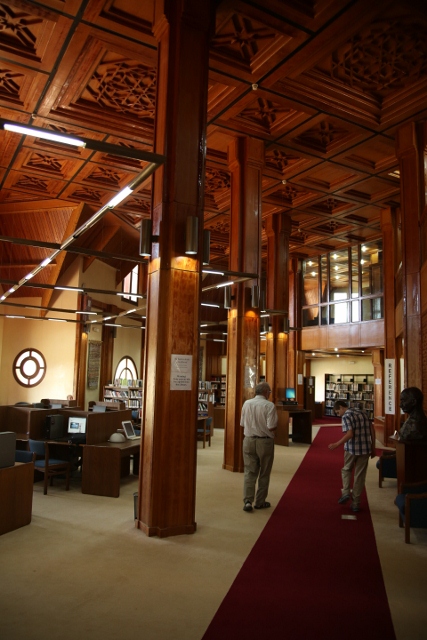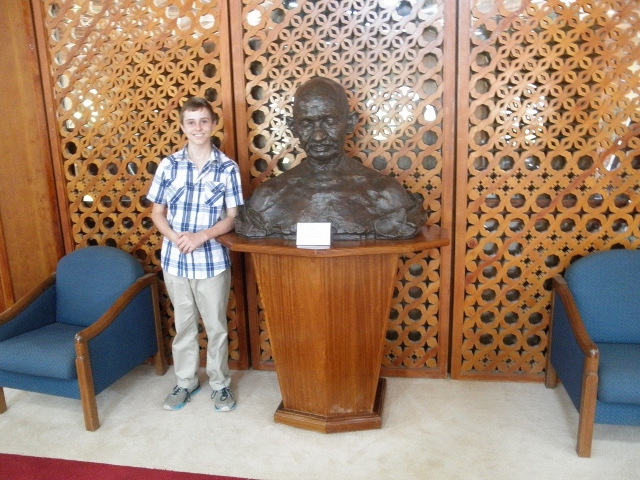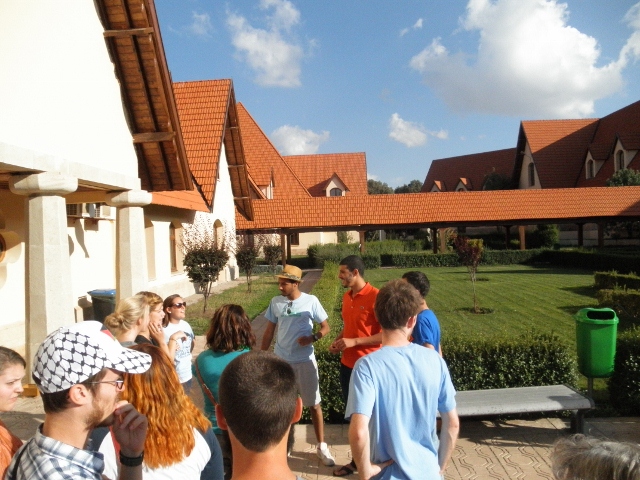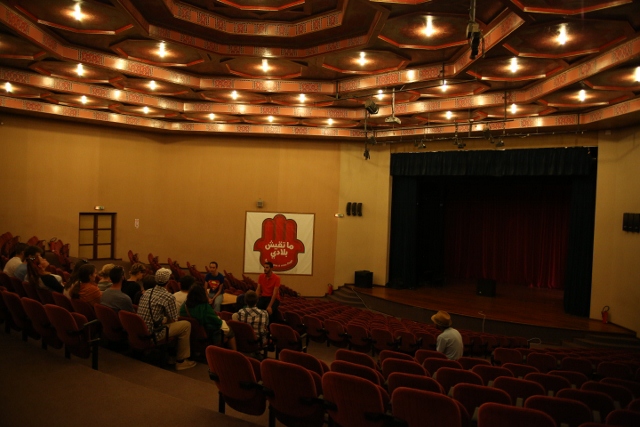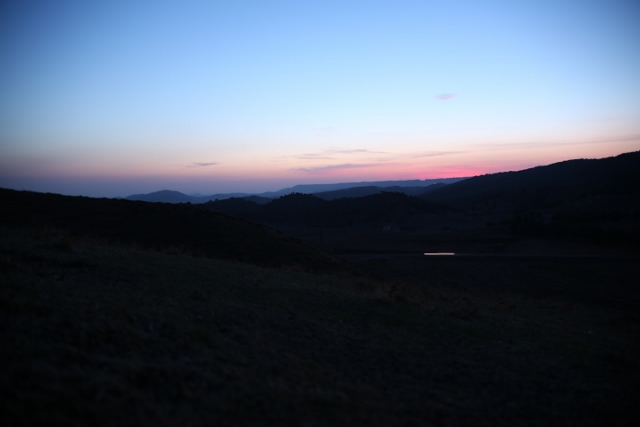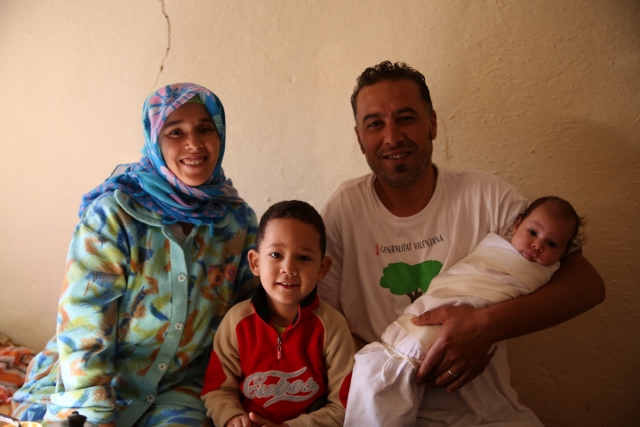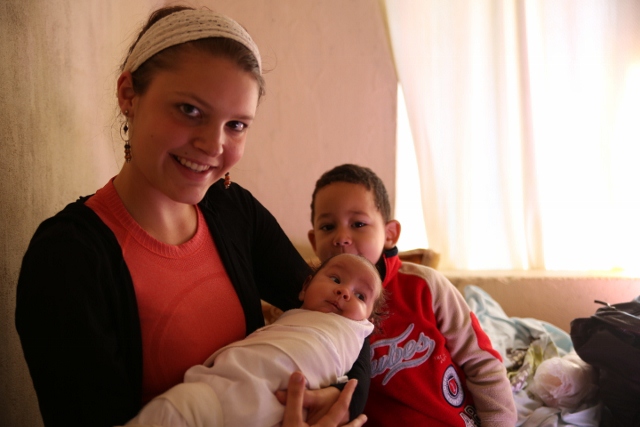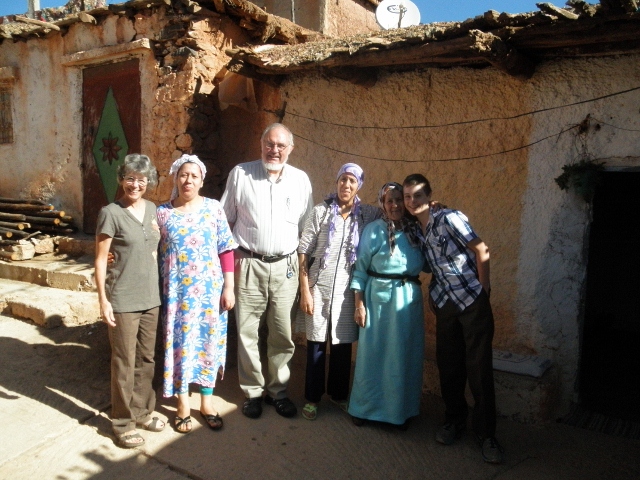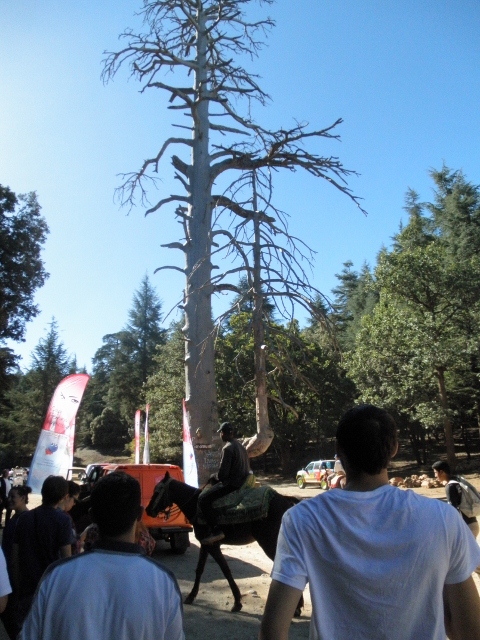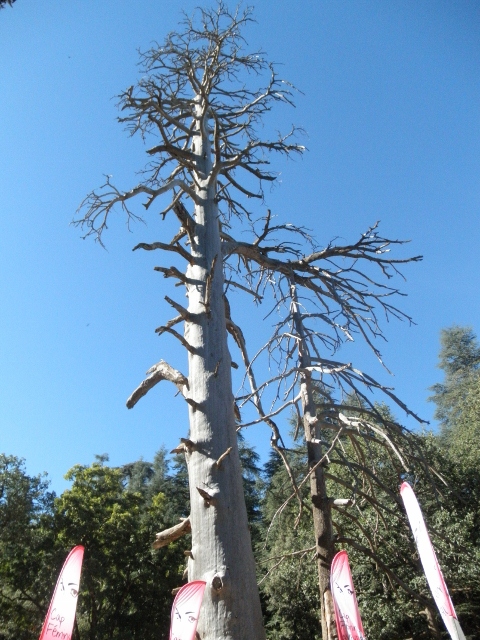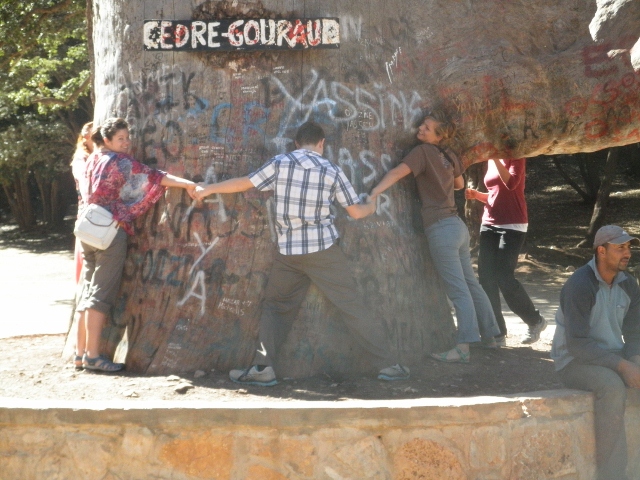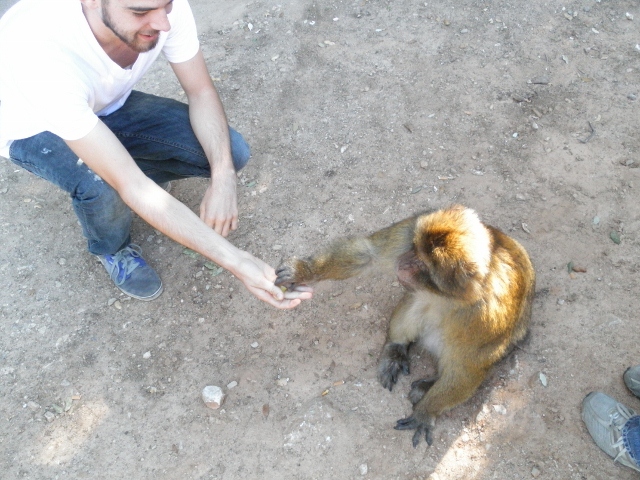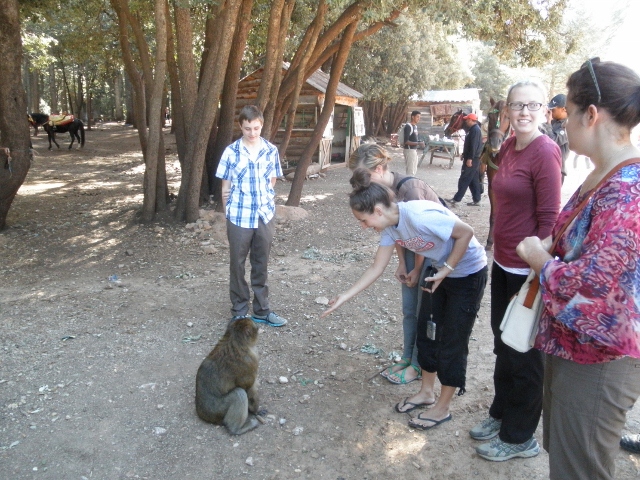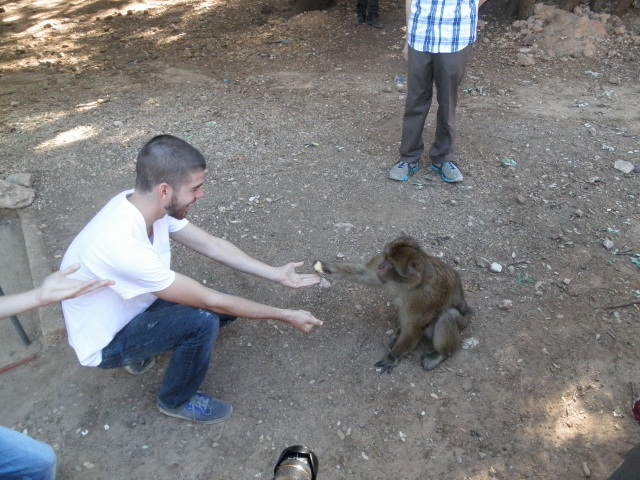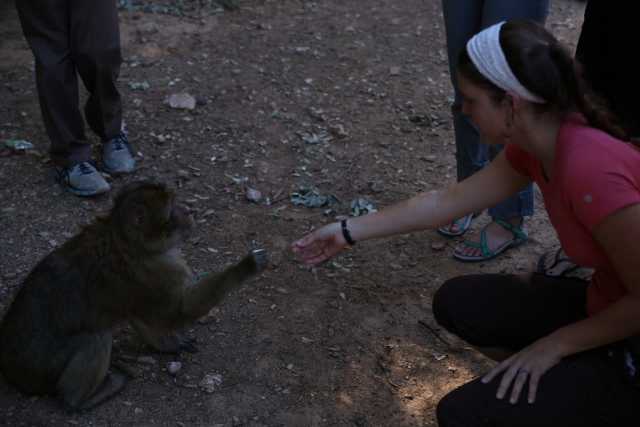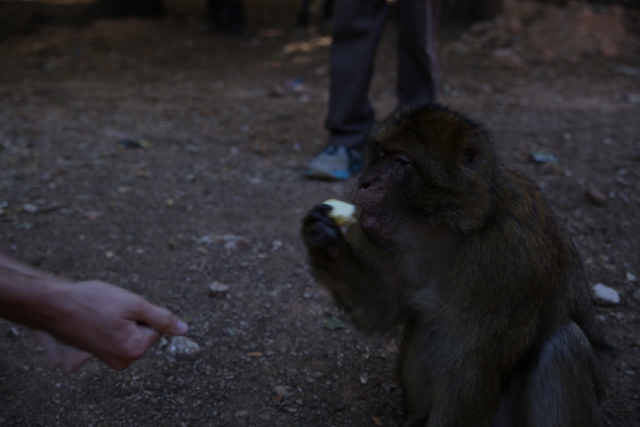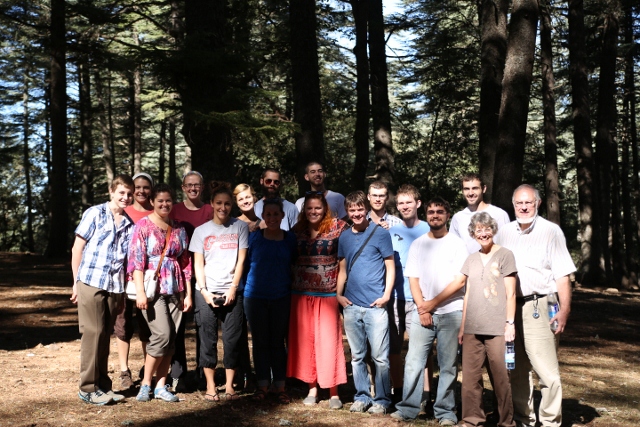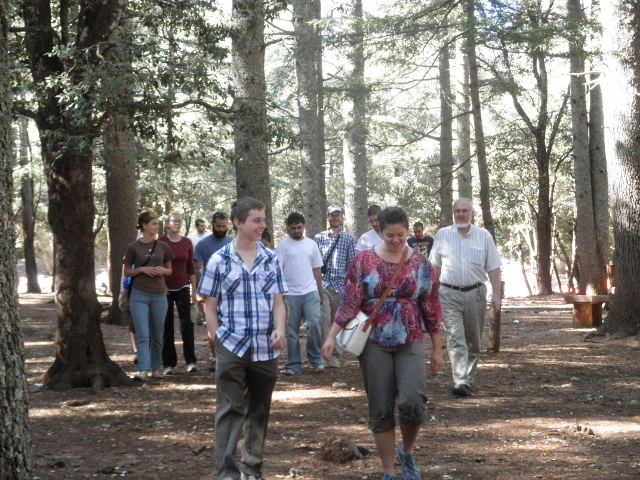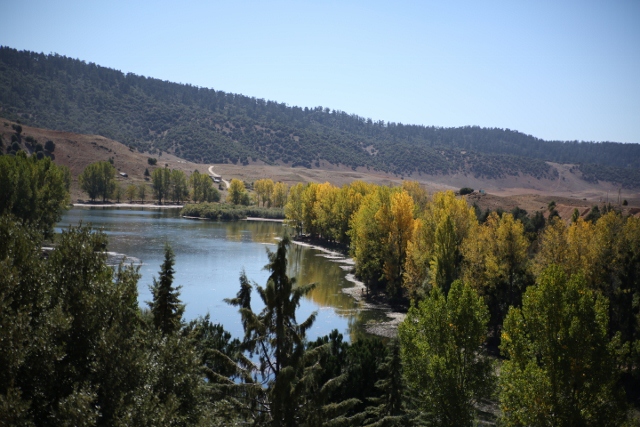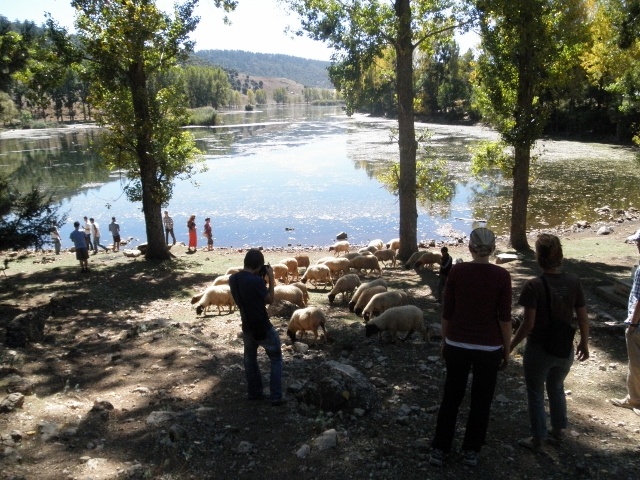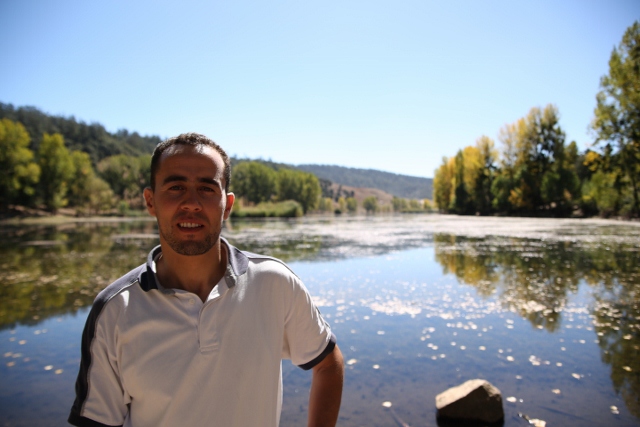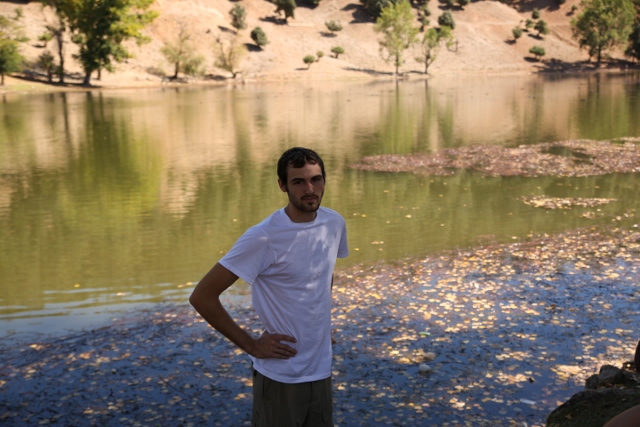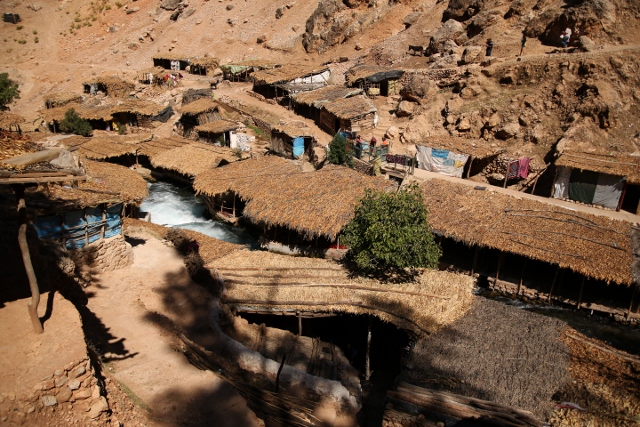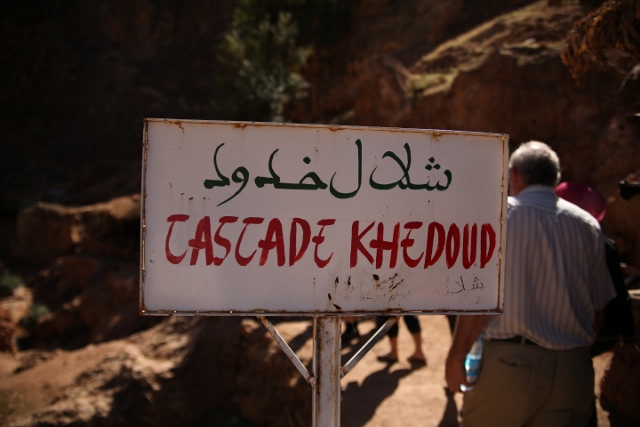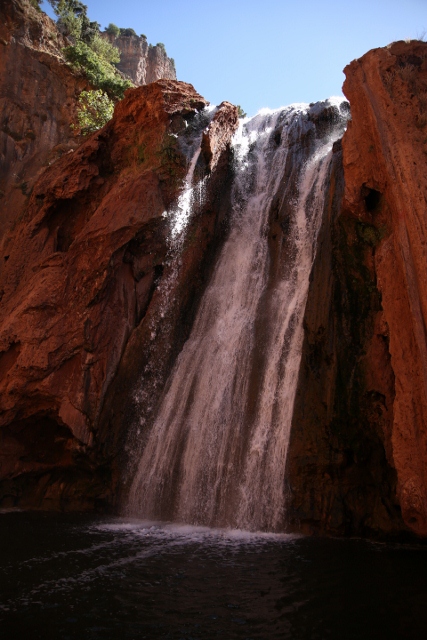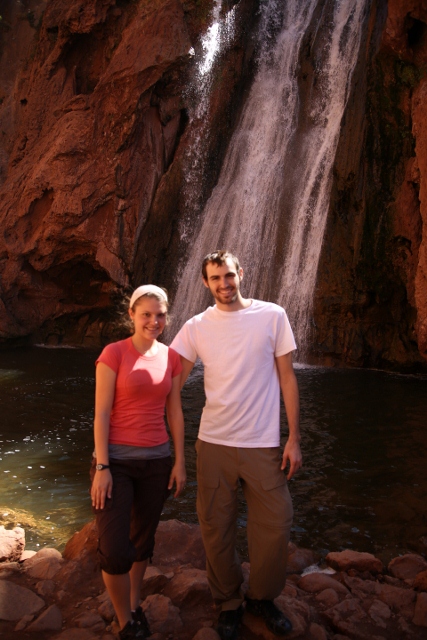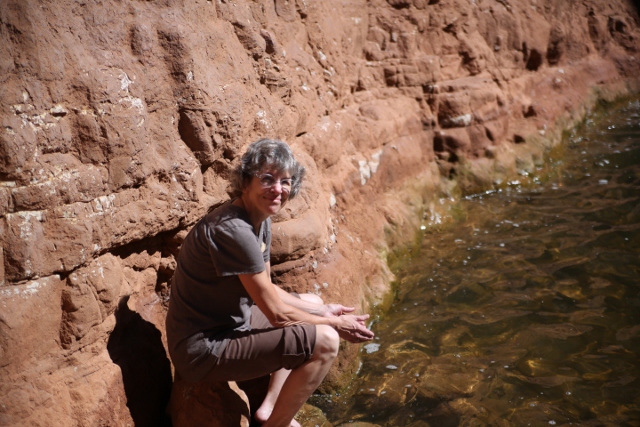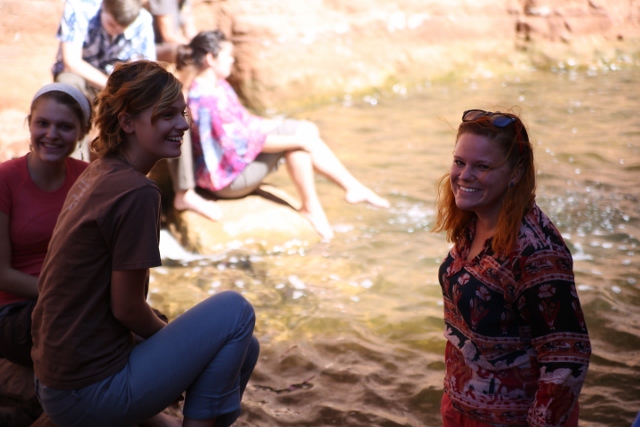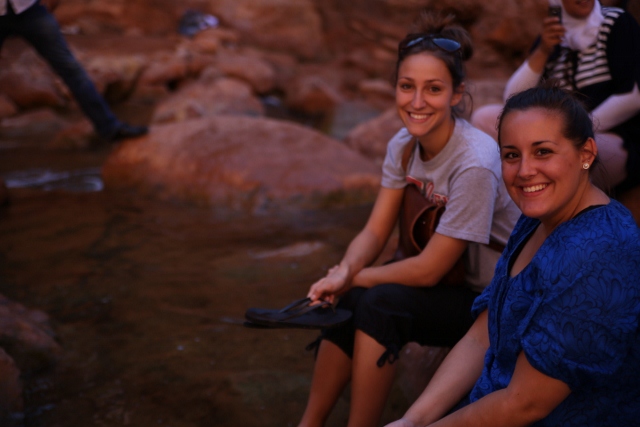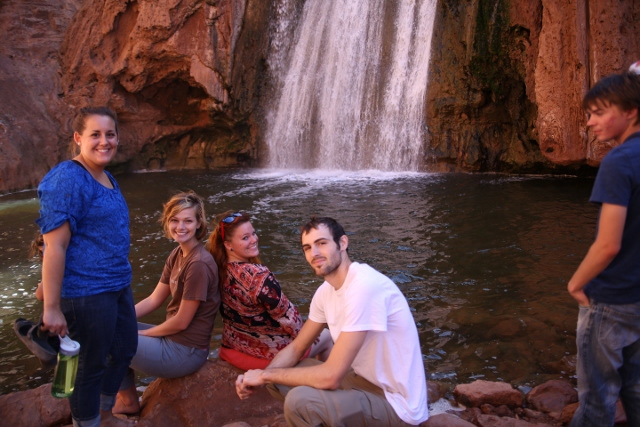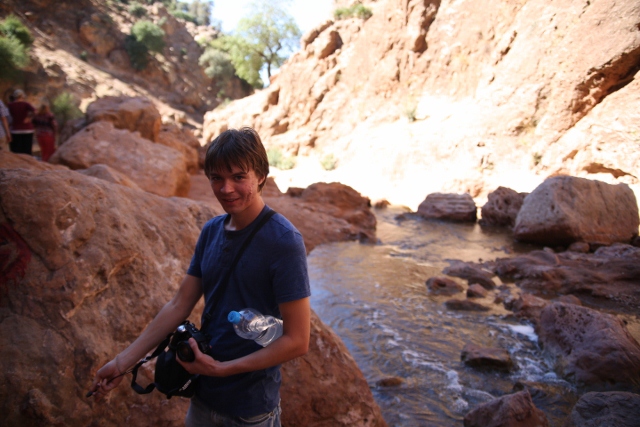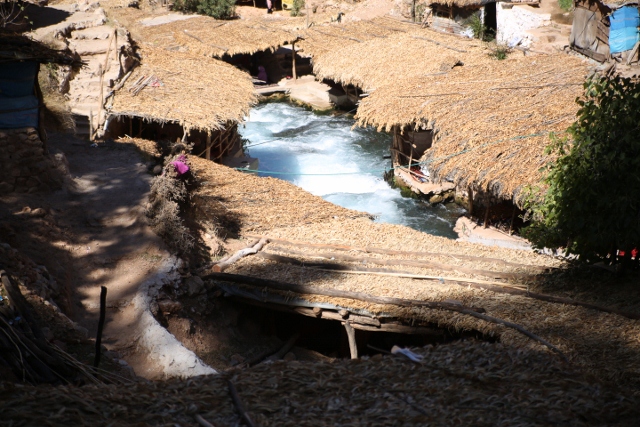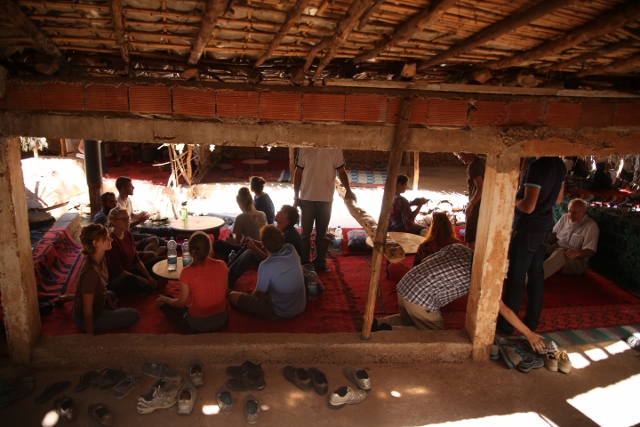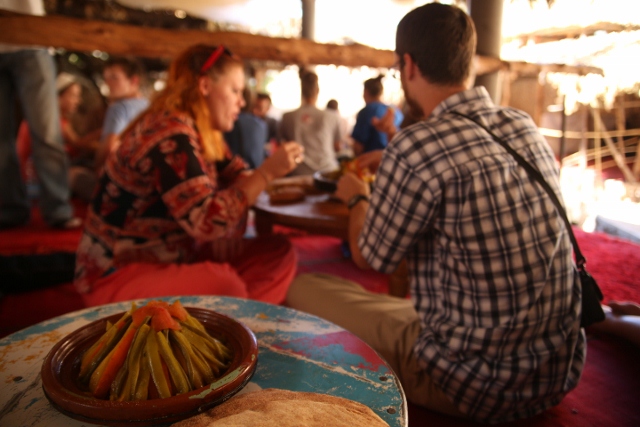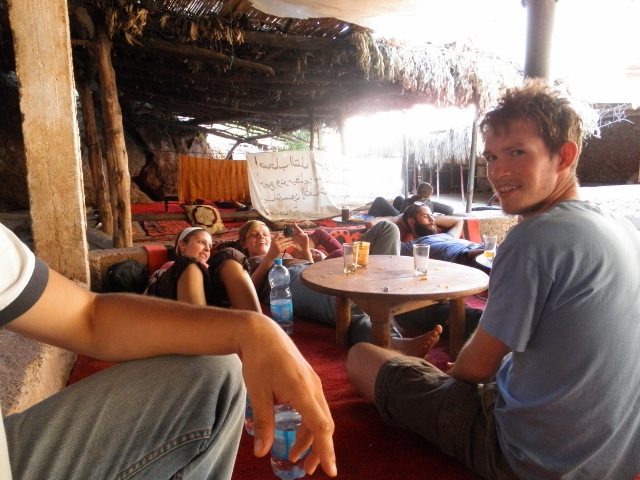Exploring the Middle Atlas Mountains
We had come through the mountains on our way to the desert two weeks ago. But this time the Middle Atlas was our destination. Only an hour’s drive from Meknes, it feels like entering another world. The forested slopes are interspersed with green valleys, arid plateaus and rocky gorges. This is Amazigh (Berber) country, and the scattered towns, villages and isolated settlements anchor the local agricultural economy. We pass through heavily forested hilltops, domain of the famous Barbary apes, and arid slopes, alive with flocks of sheep, goats, cows, donkeys and the occasional horse. We pass through the picturesque town of Al-Hajeb on our way to Azrou, an important town of the Middle Atlas and home to our intrepid Moroccan program assistant, Fouad Achehbar.
Our first stop is at the trout farm and hydrobiology research center at Ras l-Ma. The center focuses on stocking the streams of the Middle Atlas with the native brown trout as well as rainbow trout brought in from the U.S. The facilities are top notch and the program includes research and fishery management, environmental education for Moroccan school children and a fishing school! From there we travel to the village of Ben Smim, where we visit a local women’s cooperative (NGO). The women of the association produce herbs and spices from locally grown plants (see us standing in a field of lavender –watch out for the cowpie!), honey from their own hives, and wool for weaving. Lunch is taken in Azrou. Afterward we continue to the mountain resort town of Ifrane, where we tour the picturesque campus and impressive library (shhhhhhhhhhhhh) of Akhawayn University, the only public institution of higher education in Morocco which offers an exclusively American curriculum with English as the language of instruction. We return to Ben Smim and meet our host families for a unique overnight experience in a Berber village.
The next morning we travel from Ben Smim to visit Arz Gouraud, the oldest cedar tree in Morocco, measuring over 10 meters in circumference. It takes seven students joining arms to surround the massive trunk. Only in the past few years has the tree failed to produce leaves. In the forest surrounding Arz Gouraud we encounter the Barbary Apes of the Middle Atlas up close and personal for the first time. In such locations, individuals of this unique species of macaque have become accustomed to taking food from visitors, which can result in conflict and dependence, a fact that rightly concerns the biologists who monitor and study them. Nevertheless we find ourselves charmed and educated by the interactions we are able to have with them. As we walk through the surrounding forest we marvel again at the topological variation and thriving biodiversity of this land.
From here we leave for the lake district and spend time hiking around Lake Wiwan. We move on to the headwaters of the ‘Oum Ar-Rbi’ river, with an impressive waterfall called ‘Oum Ar-Rdie. It is a well-known and beloved destination for visitors from across Morocco and abroad. The area is characterized by an unusual convergence of seven salt and seven fresh water springs. After our visit we are treated to a wonderful tajine lunch on site.
Returning to Azrou, we are able to visit the artist cooperative near the center of town. Beautiful Amazigh handicrafts are available, and the artists themselves are present, engaged in their craft and eager to talk about their work. The artisans work in a variety of media, including wood, leather and wool for carpet weaving.
The excitement of having immersed ourselves – even for a few days – in the world of the Middle Atlas, having driven its winding roads, walked its rugged forests, been received with overwhelming hospitality by its hardy people, lingers as we board the bus and return to Meknes, our home away from home.
